Recommended Sightseeing Courses in Nikko
A Nikko Half-day Course (about 3 hours)
Toshogu, Rinnoji & Futarasan
Shinkyo ⇒ Rinnoji Temple (Sanbutsudo) ⇒ Toshogu Shrine (Ishi-dorii ― Five Story Pagoda ― Front Gate ― Sacred Stable ― Three Storehouses ― Holy Water Font ― Yomeimon Gate ― Portable Shrine House ― Karamon Gate ―Sanctuary) ― Rinnoji Temple (Honjido) ⇒ Futarasan Shrine (Sanctuary ― Goshinboku ― Haunted Lantern ― Matchmaking Bamboo Grass ― Futara Miraculous Fountain ).
B Nikko One-day Course (about 7 hours)
Toshogu, Rinnoji, Futarasan & Lake Chuzenji (Kegon Falls)
Shinkyo ⇒ Rinnoji Temple (Sanbutsudo) ⇒ Toshogu Shrine (Ishi-dorii ― Five Story Pagoda ― Front Gate ― Sacred Stable ― Three Storehouses ― Holy Water Font ― Yomeimon Gate ― Portable Shrine House ― Karamon Gate ―Sanctuary) ― Rinnoji Temple (Honjido) ⇒ Futarasan Shrine (Sanctuary ― Goshinboku ― Haunted Lantern ― Matchmaking Bamboo Grass ― Futara Miraculous Fountain ) ⇒ Second Iroha-zaka Slope ⇒ Akechidaira Plateau ⇒ Kegon Falls ⇒ Lake Chuzenji ⇒ Dragon’s Head Fall ⇒ Senjo-ga-hara ⇒ Yutaki Falls ⇒ Lake Yunoko ⇒ First Iroha-zaka Slope.
Optional Destination: Taiyuin (about 40 minutes)
Taiyuin Mausoleum (Niomon ― Nitenmon ― Yashamon ―Karamon ―Worship Hall ― Ainoma ―Honden ― Kokamon).
Extra Courses
1. Kanman path (4km; about 3 hours)
Nikko Public Meeting Hall (Nikko Sogo Kaikan) (550m) ⇒ Jokoji Temple (Oya-Jizo-Onkubi,Sugegasa Higiri Jizo) (400m) ⇒ Bake Jizo (Narabi Jizo) ⇒ Reihi-Kaku Divine Tower ⇒ Kanman-ga-fuchi Abyss (600m) ⇒ Dainichi Bridge (250m) ⇒ Matuso Basho’s Haiku Monument (700m) ⇒ Nikko Botanical Garden (800m) ⇒ The Gravestone of the Self-immolations (100m) ⇒ Tamozawa Imperial Villa Memorial Park (400m) ⇒ Nikko Public Meeting Hall.
2. Takino’o Path (5km; about 2 hours)
Shinkyo (Sacred Bridge) (100m) ⇒Hongu Shrine (50m) ⇒ Shihon-ryu-ji Temple (1,000m) ⇒ Kaizando (220m) ⇒ Kannondo ⇒ Kitano Shrine (700m) ⇒ Shiraito Falls (200m) ⇒ Takino’o Shrine (600m) ⇒Gyoja-do (700m) ⇒ Futarasan Shrine (1,000m) ⇒ Shinkyo (Sacred Bridge ).
- Please do not hesitate to contact us if you want to visit other sight seeing spots in the Utsunomiya Area. We can tailor a custom sightseeing course according to your interest
Around Nikko
Nikko
- Nikko is located in the northwestern part of Tochigi Prefecture, about 150 kilometers north of Tokyo. Nikko has long flourished as one of the most famous religious centers in Japan since 782, when the Priest Shodo (735-817) founded a temple there.
In the Edo Period (1603-1867), Nikko became the site of the Toshogu Shrine which enshrines the spirit of Tokugawa Ieyasu (1542-1616), founder of the Tokugawa Shogunate.
Nikko City is a part of the wider Nikko National Park which includes such scenic locations as Lake Chuzenji, Kegon Falls, Mt. Nantai and Senjogahra Plateau.
There is a famous proverb about Nikko, “Never say kekko (wonderful) before you see Nikko.
Nikko was added to the UNESCO World Heritage List in December 1999.
1.Shinkyo (Sacred Bridge)
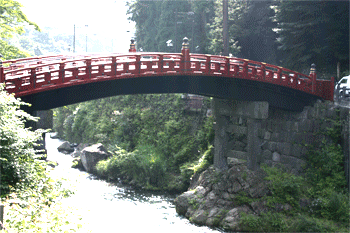
When you go from JR Nikko Station or Tobu Nikko Station to the Toshogu Shrine on foot or by bus, you cross the Daiya River just before Nikko Sannai (the Area of Two Shrines and One Temple). On the left you can see Shinkyo, a beautiful red-lacquered bridge over the Daiya River
It is 28 meters long and 7 meters wide. It was first painted red in 1936 as it is now. Destroyed completely by flooding in 1902, it was reconstructed two years later
The Legend of two heavenly snakes surrounds the bridge. These two snakes helped Saint Shodo cross the river by entwining themselves into a bridge with barren wild sedge (marsh grass) on their backs. Shodo was a Buddhist priest who laid the foundation of Nikko as the eastern center of Japanese Buddhism.
That's why the bridge is also called Yamasuge-no-Jabashi or "Bridge of Snakes with Wild Sedge".
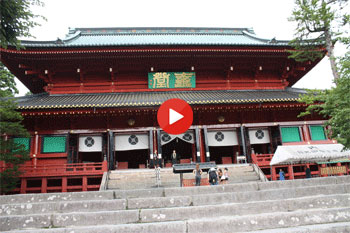
Sambutsudo is the main hall of the Rinnoji Temple. It`s the largest wooden building in Nikko, built in 848 by the famous priest, Jikakudaishi.
Sambutsudo houses three large Buddha statues, each 8.5 meters tall: Amida Nyorai (center), Senju Kannon (right) and Bato Kannon (left). People pray before the statues for national security and world peace.
In front of the temple, there is a very rare kind of cherry tree, Kongozakura, which is around 500 years old. It blooms in the beginning of May.
Toshogu Shrine
- Toshogu was first built in 1617 and reconstructed in 1636 by Tokugawa Iemitsu, the third Tokugawa Shogun.
The whole area including the buildings is dedicated to Tokugawa Ieyasu, who is believed to be the guardian god of Japan.
The Shinto shrine has two torii gates, a water font, a worship hall and a sanctuary. A torii is a gateway which marks the approach to a Shinto shrine, made from two upright pillars and two horizontal beams.
Alongside Shinto elements, the Toshogu Shrine contains Buddhist features as well. These include a five-story pagoda, a gate with two Deva kings and Buddha statues.
The shrine was built in a mixed style because Ieyasu was deified after his death and became the god “Tosho-Daigongen”, who is also an incarnation of Buddha called Yakushi Nyorai. A Shinto god and a Buddha were connected in this way and are believed to be one and the same deity (religious syncretism).
3.Ishi-dorii
Ishi-Dorii also goes by the name Ichi-no Torii (First Torii). A torii has three functions:
- It is the boundary between the human and the spiritual world.
- It prevents evil spirits from entering holy precincts.
- It purifies people who pass through the gate.
Kuroda Nagamasa, a feudal lord and a subject of Ieyasu, donated this torii. It has not been modified since its construction in 1618.
The torii is 9 meters tall and 13 meters wide, consisting of 15 carved granite blocks. It is the largest stone torii built in the Edo Period. The granite originated in the Kyushu region which is more than 1,200 kilometers away from Nikko.
On the upper front of the torii is a tablet inscribed with five Chinese characters which read as To-Sho-Dai-Gon-Gen, a name given to deified Tokugawa Ieyasu after his death.
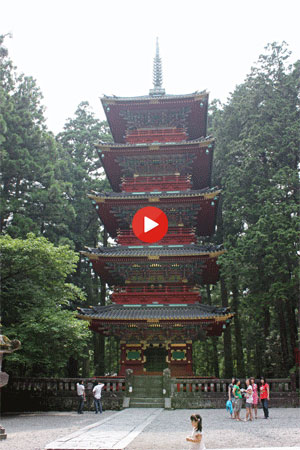
A pagoda is a typical structure found in a Buddhist temple. But here in Toshogu a five-story pagoda adds to the splendor of the Shinto shrine.
The pagoda, Goju-no To, enshrines the Five Wisdom Buddha statues. It was donated in 1650 by Sakai Tadakatsu, one of the feudal lords in western Japan, to commemorate the 33rd anniversary of Ieyasu's death. Unfortunately the original structure burned down in 1815. But three years later, a descendent of Tadakatsu rebuilt the pagoda. The current structure differs slightly from the original.
Goju-no To is 34.3 meters tall. A long wooden pillar hangs from the fourth floor like a pendulum. It functions as a counter-balance during earthquakes and strong winds and enables the building to withstand nature's forces.
The five roofs or stories represent the five elements in the universe - earth, water, fire, wind and sky. The first four roofs are built in a Japanese style while the fifth roof is built in a Chinese style. This is one of the Toshogu mysteries.
Legend has it that by constructing the fifth roof in a different style the artisans avoided perfecting the building in order to prevent evil spirits from becoming jealous.
Under the first roof there are carvings of twelve animals that come from the Chinese Zodiac, once used to represent the time, the year and the direction.
5.Front Gate
This is the entrance gate to Toshogu. The gate is guarded by a pair of Nio (Deva Kings), two of the guardian gods of Buddhism. The one on the right pronounces "a" with his mouth open, the other on the left "um" with his mouth closed. The former means the beginning or life, and the latter means the end or death. In Hinduism "Aum" (a+um) or "Om" is a holy word which implies the workings of Gods: creation, maintenance and destruction.
6.Sacred Stable
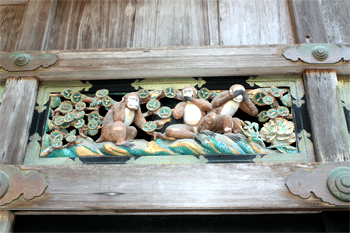
Shinkyusha, built in 1936, is a stable for sacred horses. It was built in the Shoinzukuri architectural style, which was typical of a feudal lord's residence.
This stable is the only unlacquered building in the Toshogu complex and the largest existing stable from that era.
One of the two sacred horses can be seen from 10 am to 2 pm daily except on rainy or snowy days. They participate in the Spring and Autumn Festivals held at Toshogu. A sacred horse must be a white male as Ieyasu's horse was. The horses currently at the stable were given as a present to Toshogu from New Zealand.
Located on the transom, just under the roof, there are eight panels of monkey carvings. Monkeys were believed to be guardians of horses.
Each panel shows a phase of growing up from birth through old age. Looking at the panels from left to right, panels 1-5 are on the front and panels 6-8 are on the west side. The second from the left is probably the most famous carving in the world. It depicts three monkeys - See-no-evil, Speak-no-evil, and Hear-no-evil. At that time people followed these principals in raising their children.
7.Three Storehouses
The Three Storehouses are used for storing tools, fixtures and clothing for the Grand Festivals of Toshogu (May 17-18, October 16-17). On the wall of the left building, you see two carvings of peculiar elephants, called Imaginary Elephants. Kano Tan'yu carved them without ever seeing a real elephant.
8.Holy Water Font
The Holy Water Font serves the purpose of purifying visitors. Here we can wash our hands and rinse our mouths before entering the main part of the shrine.
9.Yomeimon Gate
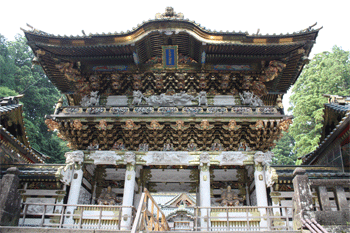
This is the most gorgeous gate in the whole Toshogu complex.
It is referred to as Higurashi-gomon, literally “A Day Spending Gate”. Its beauty is so impressive that visitors can spend the entire day gazing at it without getting bored.
Inscribed on the blue tablet above are the five Chinese characters: To-Sho-Dai-Gon-Gen, Ieyasu's posthumous name, which we have seen already on Ishi-Dorii (First Torii).
The gate was erected in 1636 and stands 11.1 meters high, 7 meters wide and 4.4 meters deep. It contains no fewer than 508 exquisite carvings. Twelve columns supporting the gate are covered with a geometric pattern called Grimon. It is believed that Grimon patterns prevent evil spirits from entering the gate.
An observant visitor will notice that the design of one of the twelve columns is upside-down. It was done on purpose to discourage evil spirits which are always envious of perfect things. This column is also called Sakasa-Bashira (Upside-down Column) or Mayoke-Bashira (Evil Spirits Averting Column).
10.Portable Shrine House
This room houses three portable shrines. The portable shrine in the middle is for Tokugawa Ieyasu, the right one for Toyotomi Hideyoshi (1536-1598) and the left one for Minamoto Yoritomo (1147-1199).
A picture of dancing celestial maidens is painted on the ceiling.
11.Karamon Gate
Karamon is the gate to Honsha (Main Shrine). “Kara” means China and “mon” means gate.
Karamon is rather a small structure compared to Yomenimon. Although it is only 3 meters wide and 2 meters deep, it was a very important gate during the Edo Period.
Only feudal lords and high-ranking officers were allowed to pass through the gate.
This gate is decorated with 611 intricate carvings and designated as a National Treasure.
Just under the roof of the gate is a carving depicting the scene of an audience of Chinese Emperor Shun, whom Ieyasu adored and admired very much.
Its walls also contain carvings. Four animals on the roof guard the gate day and night. The carving of a crane may look familiar to you as it was once used as the logo of JAL (Japan Air Lines).
12.Sanctuary(Haiden, Ishinoma & Honsha)
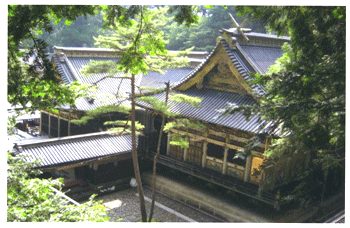
Honsha, the most sacred place in Toshogu, consists of three chambers: Haiden (Hall of Worship), Ishinoma (Stone Room) and Honden (Inner Shrine).
Honsha is a perfect example of Gongenzukuri, one of the architectural styles of Shinto.
Haiden of Honsha is further divided into three parts - the room for the imperial family, the room for the Shogun and the central room.
The ceiling of the central room is divided into hundred coffers. On each of them is painted a picture of a dragon, each different in form.
On the walls of this room, you can see 36 framed pictures of so many famous Japanese poets of the Heian Period (794-1192).
Ishinoma is located between Haiden and Honden, where the three holy spirits are enshrined.
Plates of fish, rice, vegetables, salt and sake (rice wine) can be found in front of Honden. Priests put them out every morning as offerings and remove them every evening. The ceiling is covered with many phoenixes.
13.Rinnoji Temple(Honjido/Nakiryu)
Honjido is commonly referred to as Yakushido because there is a statue of Yakushi Nyorai, the Buddha of Medicine. It is believed that Tokugawa Ieyasu is a reincarnation of Yakushi Nyorai.
On both sides of Yakushi Nyorai, there are twelve statues of the guardians of zodiac signs.
Honjido is also famous for Nakiryu (Roaring Dragon). On the ceiling of the building there is a 6-by-15-meter picture of a dragon, painted with Indian ink. The dragon seems to be looking down at the visitors. The roar of the dragon can be heard when a Buddhist monk strikes his wooden batons.
Futarasan Shrine
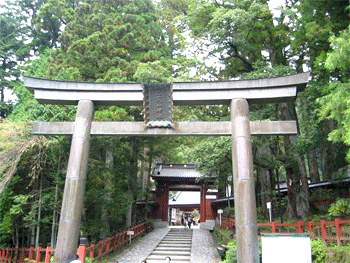
About 1200 years ago, a Buddhist saint called Shodo Shonin came to Nikko and built the first Shihonryuji Temple and later the Hongu Shrine in 790 on the north side of the Daiya River. The latter is the origin of the Futarasan Shrine, which consists now of several shrine buildings in different areas.
Shodo Shonin vowed to reach the top of the holy mountain of Nantai, a task in which nobody had succeeded before. Overcoming all difficulties, he managed to climb up the mountain and built a small shrine on the summit in 782 (Okumiya or the Inner Shrine). Two years later another shrine was constructed on the shore of Lake Chuzenji for worshippers who couldn't climb to the top (Chugushi or the Intermediate Shrine).
However, because of frequent floods of the Daiya River, Hongu Shrine was moved from the riverside to the place in Nikko Sannai near the Yomeimon Gate of Toshogu (Shingu or the New Shrine). The shrine is dedicated to the gods of three famous mountains of Nikko: the god of Mt. Nantai, Mt. Nyoho and Mt. Taro.
14.Sanctuary
Haiden (Hall of Worship) was built between 1644 and 1648 and Honden (Inner Shrine) in 1619.
15.Goshinboku
In the precincts there are cryptomeria trees with Shimenawa (sacred straw ropes) around their trunks. They are called Goshinboku (Sacred Trees), Oyakosugi (parents-and-child cryptomeria) and Meotosugi (husband-and-wife cryptomeria).
16.Haunted Lantern
It's the oldest lantern in Nikko, made more than 800 years ago. The legend goes when it is lit it will transform itself into a weird figure. There are over 70 sword cuts made by scared Samurai warriors.
17.Matchmaking Bamboo Grass
A god of love is believed to reside on the plant. If anyone ties omikuji, a written oracle, on the plant making a wish of happy wedding, their wish would come true.
18.Futara Miraculous Fountain
The water in the fountain is suitable for making sake. The temperature of the water is 12℃ all the year round.
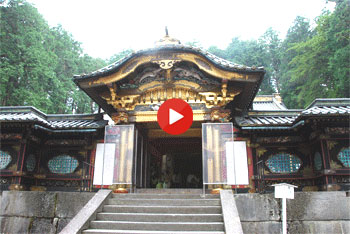
This is the mausoleum of Tokugawa Iemitsu, the third shogun (1604-1651). It is less gorgeous and has fewer buildings than Toshogu. Its fundamental colors are black and gold. The construction was started in 1652. It faces the direction of Toshogu and provides an interesting contrast with it.
19.Niomon
This is equivalent of Omotemon gate in the Toshogu Shrine.
20.Nitenmon
It's the largest gate in Nikko precincts.
21.Yashamon
It's equivalent of the Yomeimon in Toshogu.
22.Karamon
It's the smallest gate of Taiyuin.
23.Sanctuary (Worship Hall, Ainoma & Honden)
Haiden (=Hall of worship) and Honden(=Inner Temple)are connected by AI-no-ma, which is equivalent of Ishinoma in Toshogu.
24.Kokamon
It's the entrance to Okunoin, Iemitsu's burial site. It was built after the style of a Chinese royal palace.
25.Iroha-zaka Slope
Irohazaka slopes are located between Nikko City and Oku-Nikko.
The uphill slopes are called the second Irohazaka and the down slopes are called the first Irohazaka.
The uphill slopes have 20 curves (9,468 meters long) while the downhill slopes have 28 curves (6,486 meters long).
The name Irohazaka derives from the old Japanese alphabet with 48 characters.
Each of 48 curves has one of Iroha characters at the corner. In autumn we can enjoy viewing amazing red foliage there.
26.Akechidaira Plateau
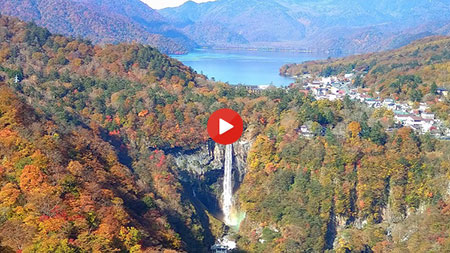
Akechidaira Plateau is on the way to Lake Chuzenji, from which you can look over a whole view of Lake Chuzenji, Kegon Falls and Mt. Nantai.
27.Kegon Falls
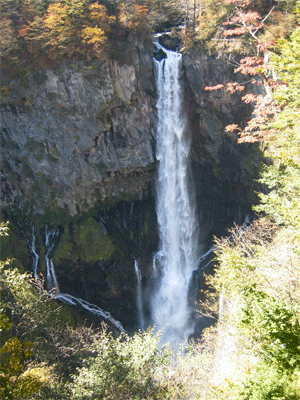
Kegon Falls is one of the most famous waterfalls in Japan. It falls 97 meters from Lake Chuzenji to the rocks below.
The name, Kegon, is derived from the title of a Buddhist sutra.
There is an elevator service that will take you down to a viewing point near the base of the falls.
28.Lake Chuzenji
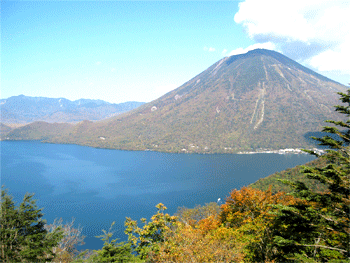
Lake Chuzenji, 1,269 meters above sea level, is located at the southern foot of Mt. Nantai. It is 163 meters deep, about 25 kilometers in circumference and covers an area of 11.5 square kilometers. It was formed when a prehistoric eruption of Mt. Nantai blocked the flow of Daiya River. It is also the water source of Kegon Falls.
The lake is also referred to as Sachi-no-Umi or Lake of Blessing, because it offers many blessings to the surrounding areas including several kinds of trout.
Areas of interest around the lake include Chuzenji Temple, the Former Italian Embassy Villa, Futarasan Chugushi, etc.
Come and take advantage of the beauty which this area offers you especially in spring and fall.
29.Ryuzu(Dragon's Head)Falls
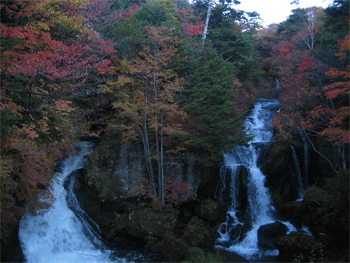
Ryuzu Falls is one of the three famous waterfalls in Oku-Nikko. It is located on the north side of Lake Chuzenji.
The falls cascades down a 210 meters path of lava formed by prehistoric eruptions of Mt. Nantai. Near the base of the falls, a rock which looks like a dragon's head divides the water stream into two, hence the name Ryuzu (Dragon-head).
30.Senjo-ga-hara
This enormous 400 hectare marshland is rich in various species of alpine flora. The high season is from June to September.
In Odashirogahara, a part of the plateau, there is a large, white birch tree (Shirakaba) standing alone, famously known as "Noble Lady". She is a popular target for many photographers.
Hikers come to Senjogahara from spring through fall. It becomes a cross-country skiing area in winter.
There are various courses for both beginners and experts. Kotoku is the starting point for many mountain promenades.
31.Yutaki Falls
Yutakki Falls is situated on the south side of Lake Yunoko, 70 meters in height and 25 meters wide. From the observatory at the foot of the falls you can enjoy its whole powerful view.
32.Lake Yunoko
Lake Yunoko, 3 kilometers in circumference and 1478 meters above sea level, was built by the lava of Mt. Mitsudake, which dammed up Yukawa River. You can go around the lake in 1 hour. The lake is surrounded by primeval forests of broadleaf trees and conifers and abounds in various kinds of wild birds.
Kanman-ga-fuchi Path
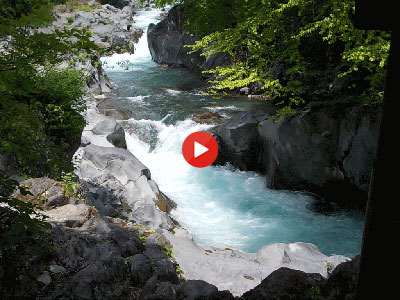
The temple is famous for Sugegasa Higiri Jizo and Oya-Jizo-Onkubi.
The temple gate has a stone roof - a unique structure in Japan. The Jizo statue is enshrined in a small wooden hall, which is called Jizo-Do. Jizo-Do is in front of the main hall of the temple.
Jizo (guardian deity of children and travelers) is wearing a Suge-gasa (Japanese hat of sedge grass). This Suge-gasa is made of stone. It is very rare to see a Jizo statue wearing a hat. It is believed that if you pray to this Jizo for something to be fulfilled by a certain date, your wish will come true.
In 1902, the Daiya River overflowed and two big Jizo statues were washed away. Later the head of one of the lost statues was found in the riverbed. The head is installed now in the Jokoji Temple.
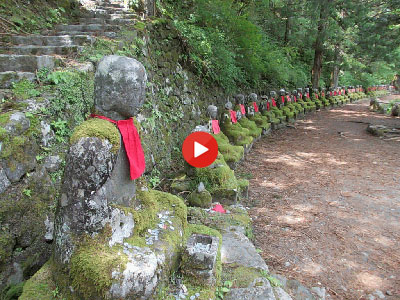
Mossy-seated statues of Jizo Bosatsu (guardian deity of children and travelers) line the path along the Daiya River. Their nickname, Bake Jizo (Deceptive Jizo), is based on the myth that no matter how often one counts, the number of Jizos always seems to change. If you want to know the exact number of the statues, why not count them for yourself?
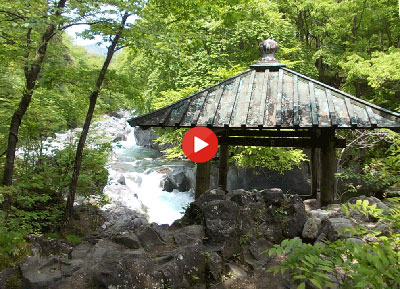
Reihi-Kaku was originally a Gomadan (Alter of Holy Fire) which the Priest Kokai built at the time of the foundation of the Jiunji Temple. They offered a prayer to the statue of Fudo-Myo-o on the opposite side of the Daiya River. The building was reconstructed in 1971 after it was washed away by a flood.

This deep pool on the Daiya River was formed by the lava from an eruption of Mt. Nantai. From the ancient times, this area has been considered a sacred place, because Fudo-Myo-O (avatar of Dai-Nichi-Nyorai or Cosmic Buddha) once appeared to people from the deep water.
The name of “Kanman” comes from the sound of the river stream. The Priest Kokai named this deep water “Kanman”, because the murmuring of the stream sounds like an incantation chanted by Fudo-Myo-O, and the abyss is so named after the last word of the incantation, “kanman”.
37.Dainichi Bridge / Matsuo Basho Haiku Monuments
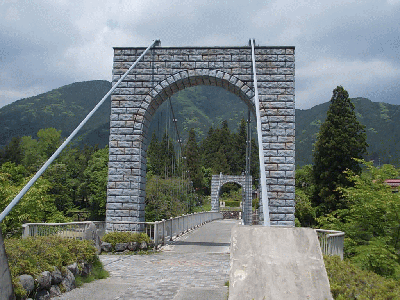
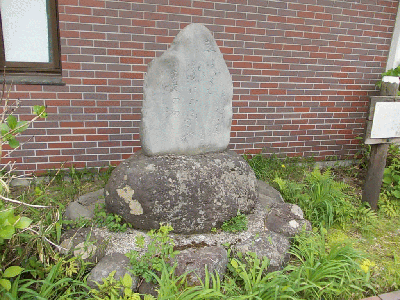
Walking across the suspension bridge (Dai-Nichi-Bashi), you find the two Matsuo Basho Haiku Monuments. One of them reads:
Ara-touto Aoba-wakaba-no Hi-no-hikari
(Oh, so solemn/ the sunlight/ among the shiny fresh green leaves)
The other reads:
Shibaraku-wa Taki-ni-komoruya Ge-no-hajime
(For the time being, / I detected the early summer/ in drops of the waterfall)
Haiku master Matsuo Basho was deeply moved by the natural beauty in Nikko when he visited there. As you know, Haiku now have a global popularity.
38.Nikko Botanical Garden
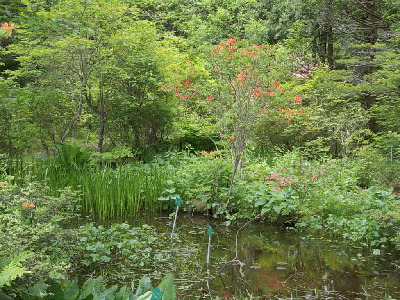
The Nikko Botanical Garden is next to the Tamozawa Imperial Villa. This garden is opened from the 15th of April to the 30th of November. In the garden are about 2,200 kinds of plants and trees collected from around the country.
39.Gravestone of Self-immolation
This huge gravestone, 3 meters high, was built to commemorate the 24 royal retainers who followed their master, the third Shogun Tokugawa Iemitsu, to the grave by committing hara-kiri in 1651.
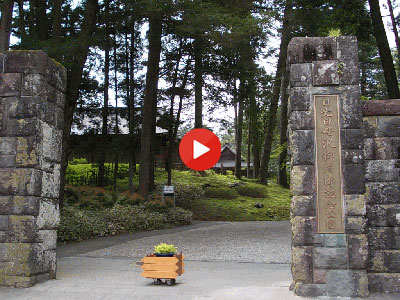
This Imperial Villa was constructed in 1899 for the Prince Yoshihito, who later became the Emperor Taisho. A part of the villa was moved from the Akasaka Imperial Villa. Enlarged several times, the villa has a unique mixed style of the Edo, Meiji and Taisho Periods. Now the villa has 106 rooms and covers an area of forty-five hundred square meters.
The villa and its famous splendid garden are open to the public. In the garden is a four hundred year old drooping cherry tree, which is in full bloom near the end of April. The villa was designated as an important cultural asset in 2003.
Takino'o Path
41.Hongu Shrine
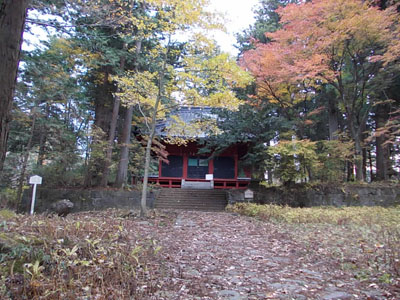
“Hongu” means “original shrine” or “main shrine”, of which the Priest Shodo laid the foundation in 790. It’s one of the Nikko Sanja Gongen (three oldest shrines of Nikko) along with the Honsha Shrine and the Takino’o Shrine. The Futarasan Shrine originates from here. It’s dedicated to Ajisuki-Takahikone-no-Mikoto, the son of the famous Okuni-Nushi-no-Mikoto.
42.Shihonryuji Temple
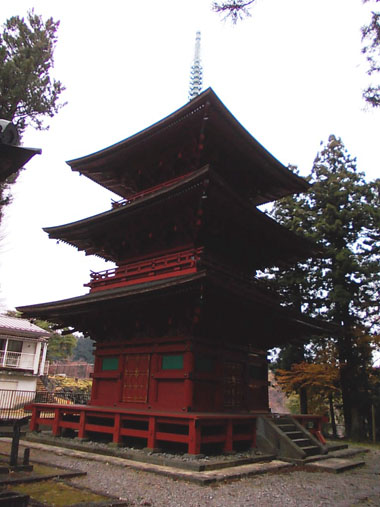
The Shihonryuji Temple dates from the Nara Period, about 1.300 years ago. At that time, the high priest Shodo Shonin and his disciples came to Nikko.
After many difficulties they finally succeeded to cross the Daiya River. By the river they built a small retreat. One day they observed a mysterious purple cloud rising in the east sky, a good omen in Buddhism. The cloud is said to have drifted away towards Mt. Futara, alias Mt. Nantai.
Then they founded the Shiunryuji temple, which means “Purple-cloud-dragon Temple”, in the place of the small retreat. Afterwards it was called by the name of “Shihonryuji Temple”. It’s the first structure ever built in Nikko, which was later enlarged. But the Kanon-Do Hall (Hall of the Goddess of Mercy) and the Sanju-no-To (three-storied pagoda) are the original buildings.
43.Kaizando
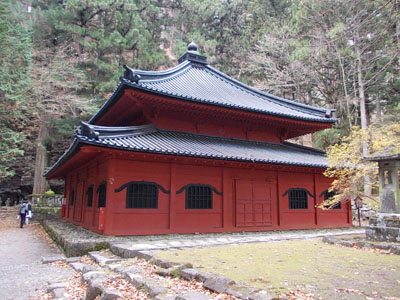
The Kaizan-Do is dedicated to the high priest Shodo Shonin, who was the first person to build a temple in Nikko. He died at the age of 83. “Kaizan” means “founder of a temple”. ln the back of the hall are the tomb of Shodo Shonin and the Hotoke Iwa (Buddha Stones). Six statues of the Buddhist guardians are tastefully carved and installed on the ground in the hollow of a rock.
44.Kannondo Hall(San-no-Miya or Kyosyado)
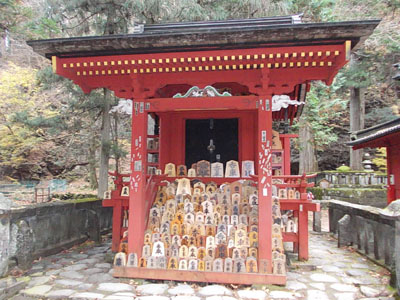
Approaching by a mossy stone pavement, you see two halls among ancient cedars, 0ne is the Kannondo and the other the Kaizando. Accompanied by a stone torii. Kannondo Hall (San-no-Miya) has lots of kyosha (one of Japanese chess pieces) of various sizes displayed in front. They are offerings of those who expect a child and wish for an easy delivery. Pregnant women take a kyosha from the hall to their home. If the baby is born safely, they bring another kyosha to the hall in addition to the borrowed one.
Do you know why the kyosha can bring them easy delivery? Kyosha moves in straight lines, just as the castle in Western chess. Pregnant women hope that the baby will move in a straight line down the birth canal --- like a kyosha.
45.Kitano Shrine
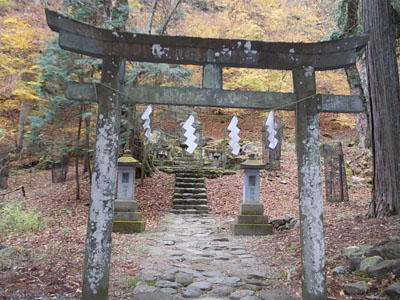
This shrine has nothing but a stone torii and a stone monument with a emblem of plum tree, which symbolizes Sugawarano Michizane, God of Education and Science.
46.Shiraito Falls
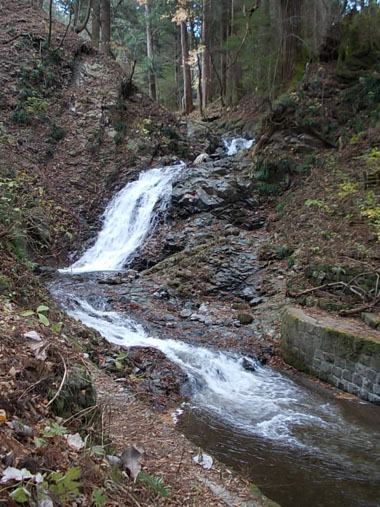
The water falls down 10 meters from the Tengusawa River. It was a famous training place for mountain Buddhists who practiced asceticism under the falls. There are over one hundred water falls in all in the Nikko mountain area.
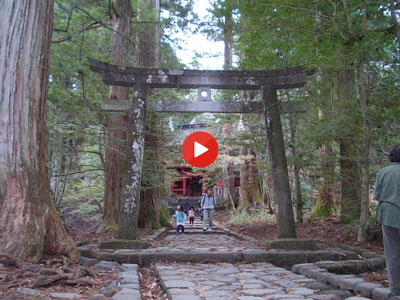
The Takino’o Shrine is said to have built by Kobo Daishi in 820 and dedicated to the goddess of Mt. Nyoho or Tagori-Hime-no-Mikoto (Amitabha Tathagata).
Until the Toshogu Shrine was built, this shrine was crowded with people who believed in the goddess as one of the incarnates of the oldest shrines of Nikko.
The shrine, situated in the mountainside, enjoys a thousand years history. In the precincts are some historic relics coming from folk belief:
Un-Damesi-no-Torii (stone torii, called “Try-your-luck” Torii), En-musubi-no-Sasa (match-making bamboo grass), Kodane-Ishi (stone to touch for the child making), and Sake-no-Izumi (sake taste spring).
48.Gyojado
“Gyojado” means “Hall of Buddhist Ascetics”. It was until the Meiji Restoration a starting point of autumn mountain training course, which leads to Mr. Nyoho and Mr. Nantai. The building is dedicated to Enno-Ozunu, supposed founder of Shugendo, mountain Buddhism.


























